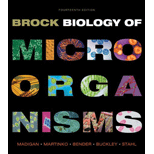
Concept explainers
Fungi are in association with a group of other species. These types of associations are called the symbiotic association. Symbiotic association is a type of mutual relation or interaction between two organisms. Both the partners in symbiotic relationships are mutually benefitted from each other because both the partners live together in such associations. The members of fungi also form symbiotic associations with plants and algal cells. Two examples of symbiotic relationships between fungi and other species are observed in lichens and mycorrhizae
Mycorrhizae are a mutualistic association between a
Lichens are the mutualistic association between a fungus and a photosynthetic partner, which can be algae of cyanobacteria. The lichens are often the first organisms to enter a barren environment and help in the early stages of soil formation.
Want to see the full answer?
Check out a sample textbook solution
Chapter 17 Solutions
Brock Biology of Microorganisms Plus MasteringMicrobiology with eText -- Access Card Package (14th Edition)
- Give a complete definition of mycorrhizae, citing the two main classes and the differences between them.arrow_forwardDifferentiate between ectomycorrhiza and endomycorrhiza.arrow_forwardWhat are mycorrhizae? Discuss the different types in detail and give two examples of fungi that form mycorrhizae with economically important plants.arrow_forward
- What is the term for the symbiotic association between fungi and cyanobacteria? a. lichen b. mycorrhizae c. epiphyte d. nitrogen-fixing nodulearrow_forwardGive the significance of mycorrhizal association to the host plant and to the fungi.arrow_forwardDifferentiate ectomycorrhiza, endomycorrhiza, and ectendomycorrhiza.arrow_forward
